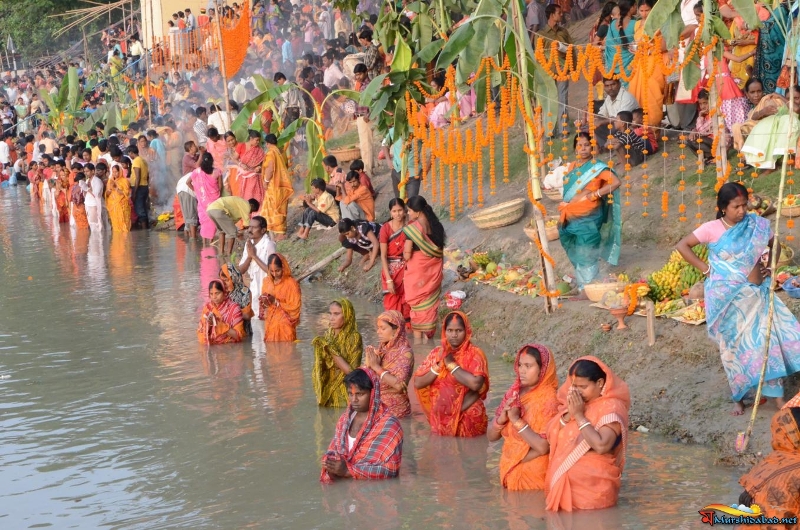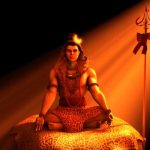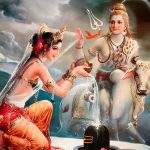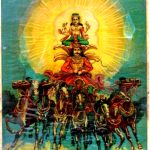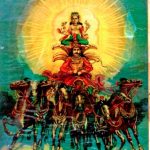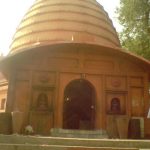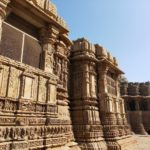Chhath Puja vrat is a festival that honours Surya Deva and his wife, Usha. This puja dates back to Vedic times.
Chhath Puja Festival
This festival occurs twice, once during the Summer and then in Winter. The summer festival occurs during Chaitra Masa (April-May). It is called Chaitri Chhath. The winter Chhath occur during Kartika masa (October-November). This is called Kartik Chhath.
Chhath Puja Meaning
Chhath means sixth, it’s a Prakrit derivation of the Sanskrit word Shashti. The main day of the Chhath festival is the sixth day after the New Moon, during the waxing phase (Shukla Paksha) of the lunar month. Chhath puja is not a one-day festival, it lasts for four days. The Summer Chhath comes after Holi and the Winter Chhath comes after Diwali.
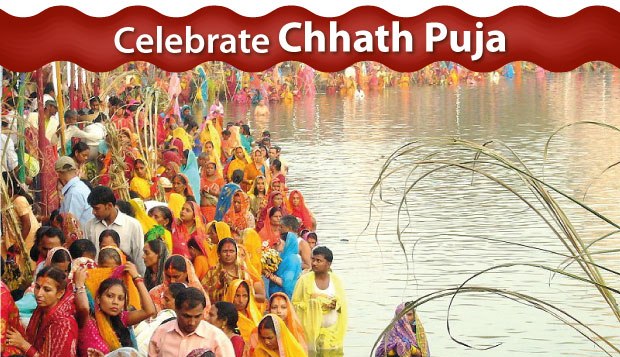
Origins of Chhath Vrat
This festival honours the sun god and his wife. Chhath Puja origin dates back to the Vedic times when Rishis composed hymns in praise of the Sun God Surya.
Legend of Goddess Khashti
In ancient times, a royal couple named Priyamvrata and Malini had no child. One day, a divine female form appeared before them. She proclaimed herself as Devi Khashti, a personification of the sixth part of the Universe. She told them that if they would worship her, she would bless them with a child. They did as she asked and soon had a healthy baby boy. Khashti here may refer to Goddess Usha, the Deity of Dawn, and the wife of Surya Deva.
In The Ramayana
Sri Rama was a descendant of the Surya Vamsa or the Solar Dynasty. So, he worshipped Surya Deva, the patron deity of their dynasty. Rama became the king on his return to Ayodhya after his exile of 14 years. Before the coronation, Rama and Sita observed this Surya Shashti Vrat (Chhath Puja).
In The Mahabharata
The story from the Mahabharata associated with this Chhath Puja Vrat is related to Draupadi. When the Pandavas and Draupadi were living in the forest, they faced many challenges. They also received many guests and had to give them food, which was hard since they themselves were living off the land. So, Draupadi observed a Vrat to Surya Dev. The Sun God, pleased with her devotion, appeared before her and gave her the Akshaya Patra (inexhaustible vessel).
Chhath Puja Vidhi
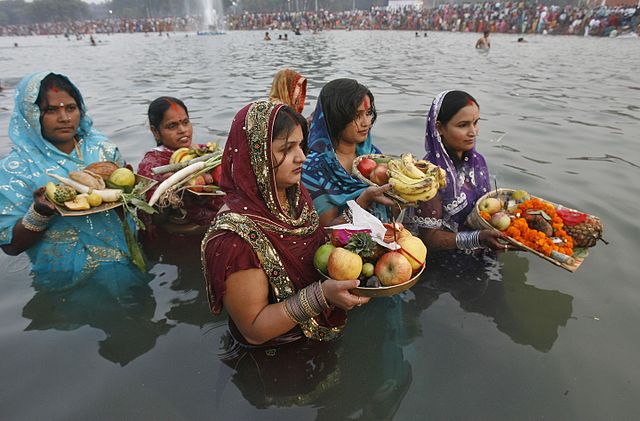
Those who perform this puja are called Vratis or Parvaitins. Mostly, the Parvaitins are women, though men also perform the Chhath Puja. Once a family member begins this vrat, they have to observe it each year, only taking a break if a death occurs in the family. If they break this vrat without a valid reason, they can’t resume it again. Vratis should also pass the tradition on to the next generation.
The Rituals and Rules
The Chaitra Masa Chhath Puja begins on the fourth day after Holi. The Kartik Masa Chhath Puja begins on the fourth day after Diwali. Vratis have to offer continuous prayers and observe rigorous fasting.
Day One
On this day the worshippers proceed to a river or pond and take a bath. They then pray to Lord Surya. Women cook lunch under the sun, in a mud pot over a wood-burning stove. The dish is made of cereals and lentils. The worshippers consume only this one meal for that day. They spend the day by the river or pond, praying to the Sun God.
Day Two
The Second Day continues with the vratis taking bath and chanting mantras praising the Sun God. On this day, the parvaitins fast until the evening, then have a meal after seeing the moon rise and praying to Chandra, the Moon God. The meal consists of kheer and chapati. After this begins a period of rigorous fasting, for 36 hours.
Third-Day
This is the main Chhath Puja day, the Surya Shashti. On this day, the vratis observe complete or Nirjala fasting. That is, they abstain from all food and drink. They worship the Sun God Surya at sunset
Fourth Day
On this day, vratis worship Usha Devi, the Goddess of Dawn, the wife of Surya Deva. Devotees come to the riverbank before dawn and witness the sunrise. This period of sunrise denotes Usha, so Vratis worship her and ask for blessings and prosperity in their life. This concludes the Chhath Puja festival.
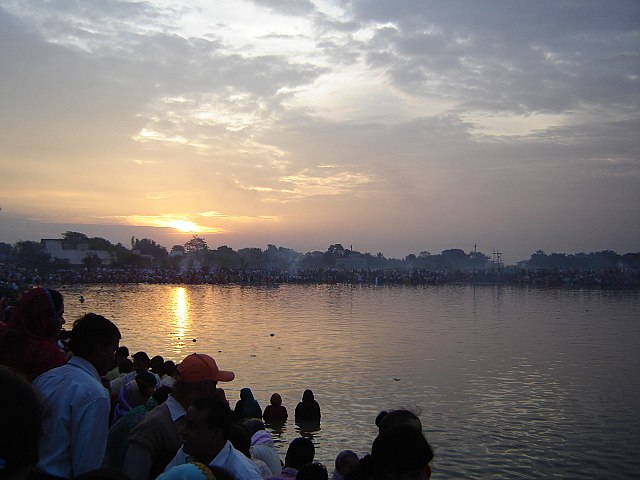
Where Is This Celebrated?
This festival is mainly celebrated in the Northern and Northeast parts of India. The states that observe the Chhath Puja include Rajasthan, Uttar Pradesh, Bihar, Madhya Pradesh, Chhattisgarh, Uttrakhand, and Jharkhand. It is also observed in Mumbai. The large Hindu communities in countries like Mauritius, the Caribbean, US, UK, Australia, Malaysia, and Japan also celebrate the Chhath festival.
The Significance of This Festival
Chhath Puja has its origins in Vedic times. The tradition has continued through the times of Ramayana and Mahabharata. The festival honours the Sun whose life-giving energy sustains life on earth. It hails the dawn goddess Usha. This festival does not include idol worship. This is because Surya Deva is a Pratyaksha Devta, that is, God Who Can Be Seen. Vratis can see the Sun and witness the Dawn, so they don’t need representation in idols.
The worshippers observe fasting (vrat), stay out in the sun and bathe in rivers. This is also considered beneficial to health, as it cleans the body and mind. It rids the body of microorganisms and toxins. Chhath Puja occurs twice every year and worshippers gather in thousands by the riversides to thank Lord Surya and Goddess Usha for their blessings.




